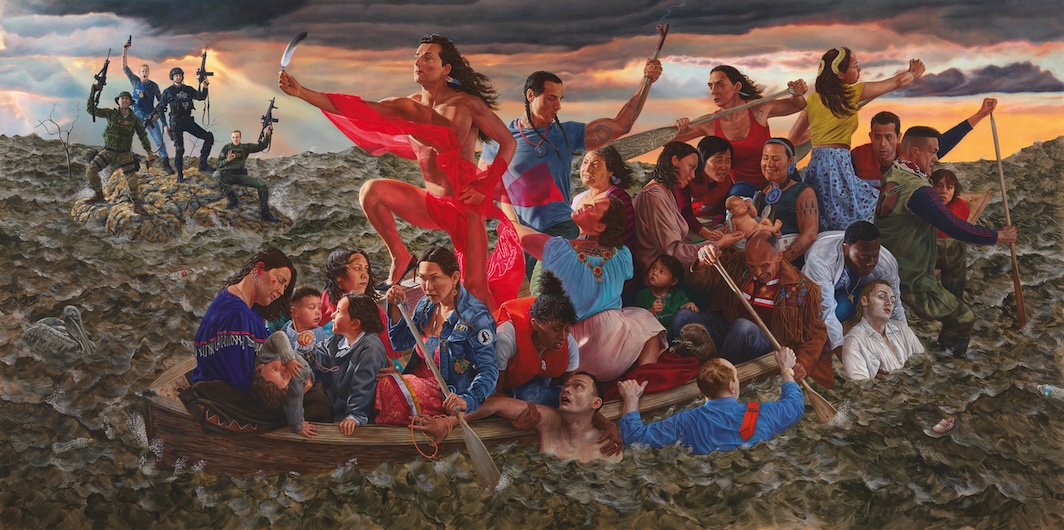
“I HAVE A THEORY THAT IT’S EASIER FOR INDIGENOUS PEOPLE to the north of the Canada–US border to imagine a world organized beyond the settler state,” writes the professor Kim TallBear (Dakota) in a recent post on her Substack, Unsettle, because the vast territory and small population to the border’s north make anti-Indigenous racism hyper-visible. In History is Painted by the Victors, a sumptuous new exhibition catalogue, Toronto-based art star Kent Monkman (Fisher River Cree) offers ample evidence in support of TallBear’s theory. The hyper-visible racism is on grotesque display in The Scream (2017), Monkman’s depiction of Royal Canadian Mounted Police abducting Indigenous children to place them in residential schools designed to strip them of their identities. “This is the one I cannot talk about,” Monkman has written. “The pain is too deep.” Speechless, he paints the soundless scream of forced separations.
Monkman is best known for his deft appropriation of history painting (e.g., Emanuel Leutze’s Washington Crossing the Delaware). Monkman wields the genre’s hoary visual traditions as a club, fashioned from the settler state’s own master narratives, and shatters the settlers’ self-image of the past. That act of creative destruction frequently assumes the shape of Monkman’s alter ego, Miss Chief Eagle Testickle, simultaneously a supernatural entity drawn from tribal lore, an extraterrestrial from the future, and a present-day gay drag queen perched atop stiletto heels. As Bryan Keene observes in one of the catalogue’s six essays, Miss Chief’s anachronisms manifest the reality of another past-present-future to behold within and beyond the self-serving narratives of settler-state mythology.
Many a museumgoer first encountered Monkman’s work in 2019, when he installed his magisterial diptych mistikôsiwak (Wooden Boat People) in the Met’s Great Hall. Hanging two monumental paintings on either side of the main entrance made the art’s installation as important as the paintings themselves: when patrons entered the museum, they had to physically turn around to view the pieces, literalizing the act of looking back at a history rendered different. On the left, Welcoming the Newcomer gestures to a past in which Miss Chief pulls the survivors of ill-fated European expeditions out of the ocean. On the right, in Resurgence of the People, representing now and the near future, she stands in the place of the revolutionary leader Washington in Leutze’s painting, guiding a new body politic—a boatload of refugees—past the barren rocks of a failed territory guarded by armed white men.
For those yet to encounter Miss Chief, History is Painted by the Victors is a great place to start. Monkman’s works are individually powerful; together they are too much to take in without something breaking in the beholder’s mind. And that is very much the point. With the lives of migrants, trans people, and many other minorities now under renewed assault, it’s the perfect time to imagine a world organized beyond settler states. Monkman opens a path for us all to get there.